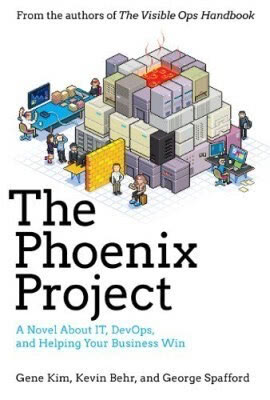The Phoenix Project

General information
- 👤 Authors: Gene Kim, Kevin Behr, George Spafford, Chris Ruen
- 🔗 Links: Goodreads | additional material
Review
I really enjoyed reading this book it pulled me in from the first few minutes due to it’s novel like narrative. There were a lot of situations in the book which I can totally relate to.
Although I know about the DevOps movement for quite some time now I didn’t know about the book and it’s role defining it. It is a great read and has some great lessons you can learn from it.
The authors explain DevOps by wrapping it up in a business fable about Parts Unlimited, an auto parts company which gets saved by DevOps. Although it is structured as a story, the book offers an overview of DevOps, instead of just giving you an endless detailed list.
It was very pleasant to go through and I can highly recommend it for everyone interested in IT topics.
Key lessons
The Three Ways
🚀 The First Way is creating a fast and uninterrupted workflow.
It is about a left-to-right flow of work from Development to IT Operations to the customer. This flow needs to be maximized by managing the Work In Progress (WIP) and have continuous build, integration, and deployment practices.
🔁 The Second Way is implementing a flow of fast feedback.
It is about the constant flow of fast feedback from right-to-left at all stages of the value stream.
💡 The Third Way is allowing space for continual experimentation.
It is about creating a culture that fosters two things: continual experimentation, which requires taking risks and learning from success and failure and understanding that repetition and practice is the prerequisite to mastery.
DevOps Purpose
DevOps is created to help increase customer satisfaction, improve product quality, and fuel and speed up experimentation and innovation.
All of these points lead to enhancing the company’s competitiveness on the market.
Quotes
Improving daily work is even more important than doing daily work.
Being able to take needless work out of the system is more important than being able to put more work into the system.
Any improvements made anywhere besides the bottleneck are an illusion.